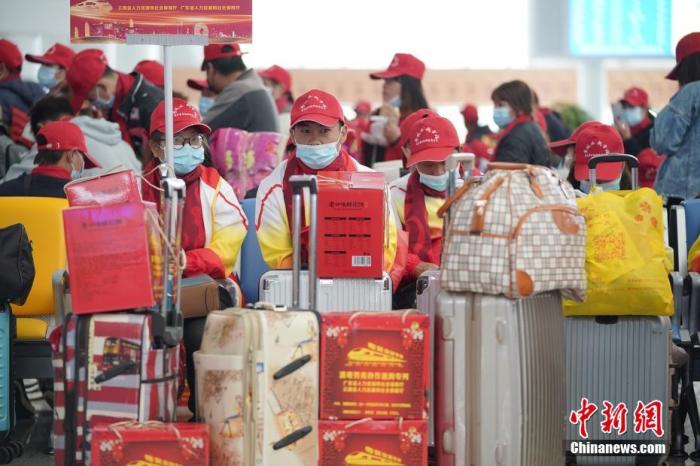China News Service, May 7th. According to the website of the Ministry of Human Resources and Social Security on the 7th, a few days ago, the Ministry of Human Resources and Social Security, the National Development and Reform Commission, and the Ministry of Finance issued the "Regarding Effectively Strengthening Employment Assistance, Consolidating and Expanding Poverty Alleviation Results, and Promoting Rural Revitalization. Guiding Opinions" (hereinafter referred to as "Opinions").
The "Opinions" propose to stabilize the scale of migrant workers; implement policies such as unemployment insurance stabilizing job return, training subsidies, etc., to guide and support the priority retention of poverty-stricken people.
Data map: migrant workers.
Photo by China News Agency reporter Liu Ranyang
The "Opinions" emphasized that employment is a basic measure to consolidate and expand the results of poverty alleviation.
It is necessary to strictly implement the overall requirements of the "four not picking", improve the employment assistance mechanism for rural low-income population and underdeveloped areas, promote stable employment of poverty-stricken people, and help improve the overall development level of poverty-stricken areas.
The "Opinions" put forward three policy measures: one is to stabilize the scale of migrant workers.
Provide employment and entrepreneurship service subsidies to human resource service agencies that provide organized labor export to people who are out of poverty, and provide one-time transportation subsidies to people who are out of poverty who are employed across provinces.
Implement policies such as unemployment insurance, stable job return, training subsidies, etc., to guide and support the priority retention of poverty-stricken people.
Cultivate, create, and develop a number of distinctive, well-known, and large-scale labor service brands, and improve the quality of labor output for the poverty-stricken people.
The second is to support local employment.
Actively promote the work-for-relief method in the construction of agricultural and rural infrastructure, and increase the proportion of labor remuneration to the greatest extent.
Continue to support the cost reduction and exemption of various employment carriers such as employment assistance workshops and various preferential policies, and give vocational training subsidies to those who absorb jobs from poverty-stricken people and carry out training on behalf of workers.
Strengthen the construction of the carrier of returning home to start businesses, and help those who are able to get out of poverty to start their own businesses.
Provide tax reduction and exemption, venue support, social insurance subsidies and other support to support the flexible employment of the poverty-stricken people.
The third is to improve the long-term mechanism of employment assistance.
Include eligible people from poverty and low-income people in rural areas into the scope of employment assistance.
Implement vocational skills upgrading projects for labor in underdeveloped regions.
Provide living expenses subsidies for the poverty-stricken population and rural low-income population during the training period, continue to implement the "Rain and Dew Plan" and provide corresponding subsidies, and provide national tuition-free and state-based tuition-free and subsidies for the poverty-stricken households and rural low-income households who are enrolled in technical colleges and universities. Scholarship and bursary support.
Improve the proportional employment mechanism in relocation areas for poverty alleviation and relocation, and support key counties for rural revitalization to appropriately increase the development of rural public welfare jobs.
The "Opinions" require that all localities should promote employment as an important part of consolidating and expanding the results of poverty alleviation, and put it on the important agenda of rural revitalization, and maintain employment assistance at all levels of work coordination mechanisms, special work classes, and village work teams, service teams, etc. The supporting force is generally stable and the existing funding channels are used to ensure the implementation of policies and the development of services.

